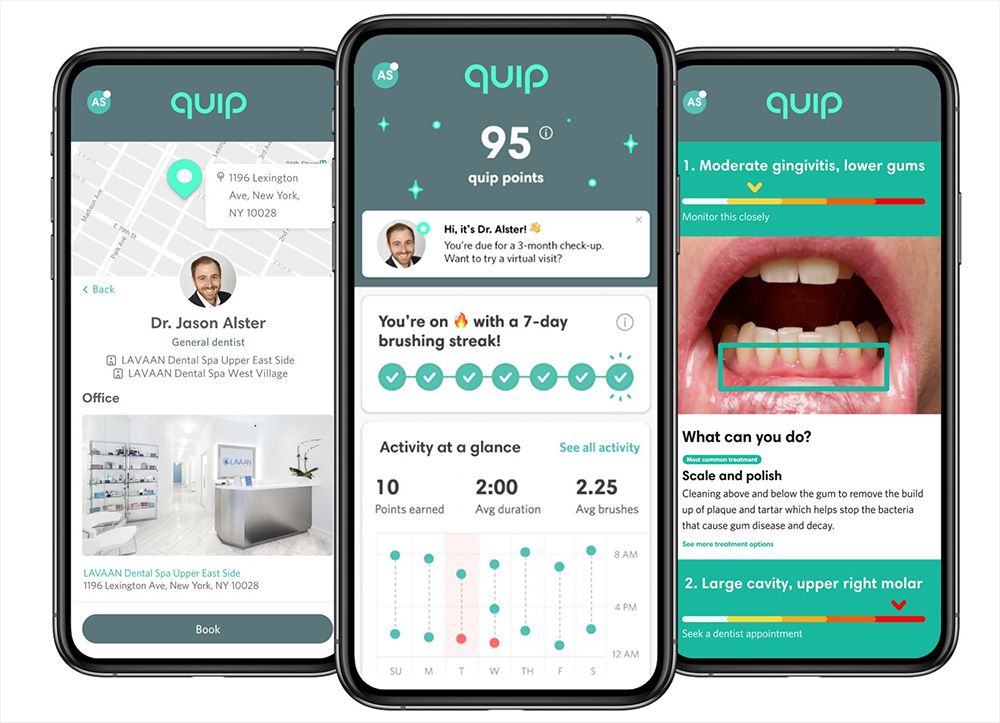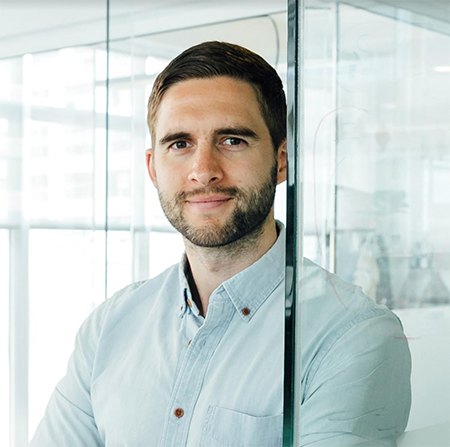Strengthening Connections Between Dental Patients and Providers to Improve Oral Health
An interview with quip Co-Founder and CEO Simon Enever about how the home care products brand got where it is today and where it plans to go.

With the recent announcement that the company had purchased teledentistry platform Toothpic, quip is taking concrete steps to bridge the gap between providers and patients. This addition of teledentistry services represents the next step in the company’s vision of creating a network of patients who have all the tools and resources they need to work with their dentist to maintain the best oral health possible.
To learn more about this vision, Dental Products Report Editorial Director Noah Levine spoke with quip Co-Founder and CEO Simon Enever. Here is that discussion.
Noah Levine: Can you tell us about quip and the original vision you had when you created quip?

Simon Enever: The idea for quip came about after a dental visit I had back in 2012. So, the vision has been around for a long time. What got me excited about entering the industry, and bringing my skill set from my former life as an industrial designer, was honestly the fact that it was about more than just hardware and personal care products.
Personal care is one of the most critical parts of maintaining good oral health. Brushing your teeth well—two minutes, twice a day—flossing, rinsing, and all of the above. However, the provider side is also critical, meaning regularly checking up with a trained professional to look inside your mouth and catch issues early, and of course, fix things if needed. I left that visit wanting to build what was the first, 360º oral care platform to connect at-home care with in-practice professional care.
When I continued to ask dentists why patients don’t do things such as brushing regularly or visiting a professional, the first big insight I had was that people just don't enjoy it. It's a chore at best, and it’s a phobia for many. Realizing this, I knew there was one core thing we could and needed to do, which was to help people better engage and invest in their oral care. We realized that it was going to be very difficult to jump to the most challenging part of an individual’s oral care routine, which is visiting the dentist and a better route was to start with the thing that everyone does: using a toothbrush twice every day, (hopefully!). So, we deliberately started with personal care, and then have begun to gradually layer in additional professional features over time to bring our larger vision to life.
NL: Can you tell me a little bit about what made quip’s recent acquisition of teledentistry platform Toothpic a good fit to keep your vision growing?
SE: Our acquisition of Toothpic is a huge part of how we're going to accelerate into the next phase of our vision. We have done well establishing ourselves to our customers, and we’re doing the same on the professional side, but we see this as the companion platform that connects the dots between at-home care and professional care. We believe in improving both, and teledentistry is the literal digital connection between the consumer and the provider.
Moreover, I think people think of teledentistry as simply “I can hop on a video call” or “I can have a chat with a dentist”. While that is one part of it, what it really is, is the provision of care from a provider using digital means, and there are many more ways it can come to life. For example, you can regularly and proactively take a photo of your mouth for review by a clinician, and they will send you a detailed report of how your mouth health is changing over time, from the comfort of your own home, helping to catch issues early and hopefully prevent the need for certain avoidable treatments. This is such a critical stepping stone that we can introduce to our millions of members who use our app and our website. Our membership base is highly engaged and they’re regularly in touch with us, whether that be through brush subscriptions, using the app for rewards, points, and habit tracking, and now there is a new way to interact with a professional that can be a stepping stone to create a better bond between you and your dentist.
NL: How do you envision the typical patient experience with your teledentistry platform?
SE: There's two primary routes that you can take. Number one is photo based – you simply use your smartphone camera, take the requested snaps of your teeth, and those pictures are sent to a dentist in your area. From there, your photos are assessed, and you'll get a report sent back to you. The dentist will tag your photos, describe any potential issues and share recommended treatments, so you can take action accordingly. This might include recommendations on a product to use, changes to some of your oral care habits, or a recommendation to book an in person visit to a provider near you.
The second path is very similar, but it is video based, so you can jump on a video call at any time. The service is available 24 hours, seven days a week. This is mostly used for emergency situations right now, so it is often a digital triage for upcoming in-person care. However, our members are so used to regular routines and regular engagements – there is a cadence to how you should be doing certain activities like changing your brush head or flossing your teeth. So, one of our immediate goals is to motivate our members to use teledentistry for prevention, rather than in a case of emergency. Our goal is to integrate this idea of preventative teledentistry into the core of everything that people are already doing on a daily, weekly, monthly, quarterly, half-yearly basis. We want to get as many people as possible, hopefully, millions of people, regularly, participating in preventative, teledental checkups.
NL: How do existing dental practices and dental groups make sure that they can engage with this engaged group of quip users?
SE: A practice can proactively enter this space, and not only receive teledental visits from potential new patients in their area but make teledentistry available to their existing patients. What quip is trying to bring to the professional industry is what we built on the patient side. We are trying to build a community – everything that we're now doing is about bringing professional services to our patient community of millions of people and bringing these millions of people to providers. The second phase of what we want to bring to dental professionals that engage in this platform is to enable enhanced care through a proactive and ongoing conversation between patients and providers with more data about what happens in between in-person visits.
Of course, there is also the business side of this, which is being able to help providers make a business line out of regular preventative check-ups. There's a big vision behind all of this, which is that one day, perhaps we can move towards more of a value-based care model. These kinds of tools that really help the provider participate in and gain from giving regular oral care instruction is something that really excites us. And, we're very excited to start telling our story about what we're y trying to do for dental professionals.
NL: What's next for quip, and how do you continue to build out this model you're bringing to the industry?
SE: We've been primarily focused on the consumer side as we've been building out this platform, and now it is coming to life a bit more visibly to the provider side. Direct to consumer online is still a huge part of our business, but one of the really exciting things has been that we've had so much success entering retail and bringing offline customers into our app and our website where we can more easily help connect them to professional services down the line.
A lot of our efforts in the second half of this year and over the last six months are around how we bring dental professionals into this platform. We’re unleashing these patient tools and working to ensure that we have a really solid professional network on the other. We hope that if we build the right products and the right platform, providers will want more and more of their patients to be engaged with this connected oral care experience.
How Dentists Can Help Patients Navigate Unforeseen Dental Care
December 12th 2024Practices must equip patients with treatment information and discuss potential financing options before unexpected dental treatments become too big of an obstacle and to help them avoid the risk of more costly and invasive procedures in the future.